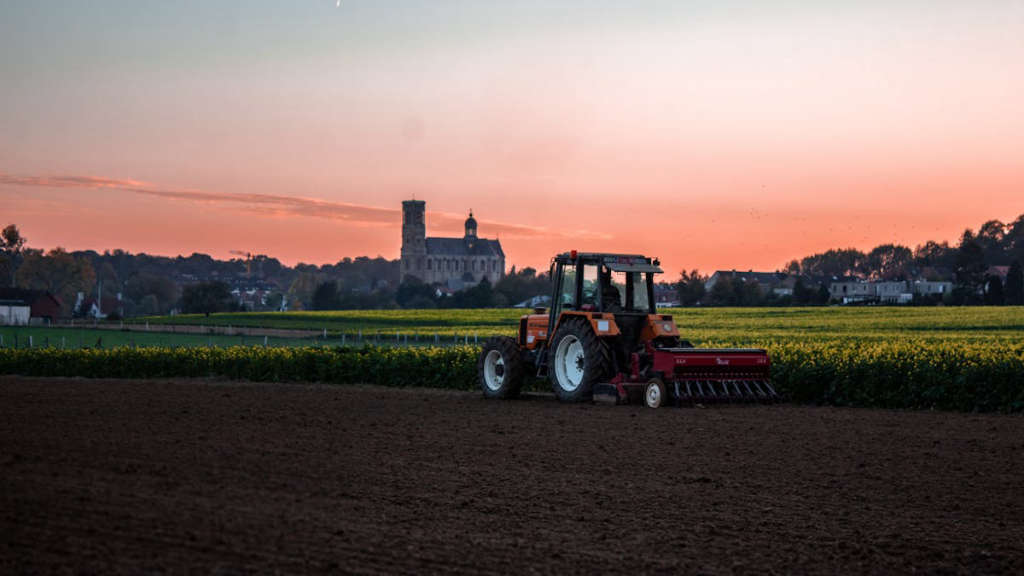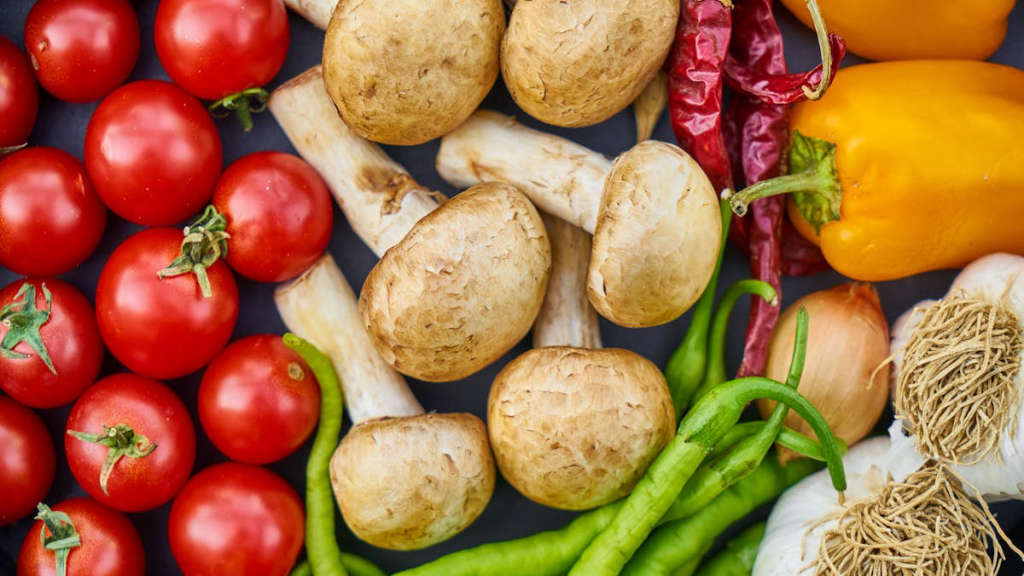As we navigate the complexities of climate change and food security, the essence of sustainable farming has never been more critical. Innovative methods are paving the way for a healthier planet and a resilient agricultural future. These practices not only nurture our crops but also enrich the soil and enhance biodiversity, creating a harmonious balance with nature. Today, we will explore how these progressive techniques can cultivate tomorrow’s agricultural landscape.
Main Points
- The importance of crop rotation in enhancing soil health.
- Utilizing cover crops to prevent erosion and retain moisture.
- Integrating technology for efficient resource management.
- Promoting biodiversity through agroecological practices.
- Community involvement in shaping sustainable food systems.

Embracing Technology: How Precision Agriculture is Revolutionizing Sustainable Farming Practices
In recent years, the agricultural landscape has undergone a profound transformation, fueled by the rapid adoption of technology. This shift, often referred to as precision agriculture, is enabling farmers to practice sustainable farming in ways previously deemed unimaginable. As we delve into this fascinating topic, it becomes evident that both technology and sustainability can coexist harmoniously, creating a future where farming is not only productive but also environmentally friendly.
The Role of Precision Agriculture
Precision agriculture integrates various technologies to enhance farm efficiency and productivity. It employs techniques that allow farmers to analyze field variability and manage resources judiciously. Here are some key components of precision agriculture:
- Data Analytics: Farmers use data analytics to interpret information collected from sensors and drones. This data helps them make informed decisions about planting, watering, and harvesting.
- Soil Monitoring: By closely monitoring soil conditions, farmers can optimize their inputs, ensuring that they use the right amount of water, fertilizers, and pesticides.
- Remote Sensing: Technologies such as satellite imagery and aerial drones provide real-time insights into crop health, enabling early intervention when necessary.
Each of these components plays a crucial role in enhancing the overall productivity of farms. However, what truly sets precision agriculture apart is its profound impact on sustainability.
Promoting Sustainability Through Technology
One of the most compelling aspects of precision agriculture is its focus on sustainability. By utilizing technology to monitor and manage resources responsibly, farmers can significantly reduce waste and minimize their environmental impact. This is particularly relevant in a world increasingly concerned about climate change and food security.
For example, precision irrigation techniques allow farmers to deliver water directly to the roots of plants, reducing water waste and ensuring optimal growth conditions. Furthermore, the targeted application of fertilizers limits runoff, preserving water quality in nearby ecosystems.
Moreover, embracing technology fosters a deeper understanding of agricultural practices, encouraging farmers to adopt methods that support sustainable ecosystems. However, like any innovation, the integration of technology does pose challenges. Questions around data privacy and the financial burden of implementing new systems can create hesitation among farmers.
Challenges and Opportunities
Despite the hurdles, the opportunities presented by precision agriculture far outweigh the challenges. Farmers who embrace this technological revolution find themselves at the forefront of sustainable practices. It is essential to address the complexities that come with new technology. They may appear daunting but can ultimately lead to transformative outcomes in farming.
In conclusion, the intersection of technology and sustainability through precision agriculture is reshaping the future of farming. As we continue to navigate the complexities of modern agriculture, it is vital to recognize the potential of these innovations. By fostering a deep-rooted commitment to sustainability and adopting precision practices, farmers can not only enhance their productivity but also contribute meaningfully to the health of our planet.

Permaculture Principles: Integrating Nature’s Wisdom for Resilient Farming Systems
In recent years, the concept of permaculture has gained notoriety within agricultural discussions, highlighting the need for sustainable practices. However, understanding the principles behind permaculture can sometimes be a daunting endeavor. It’s important to recognize that permaculture isn’t just about growing food; it’s about designing systems that are as resilient as nature itself.
What is Permaculture?
Permaculture, a term derived from “permanent agriculture,” advocates for an approach that mirrors the complexities of natural ecosystems. At its core, it focuses on working with nature rather than against it. This means designing agricultural practices that maintain the health of the soil, conserve water, and promote biodiversity. Yet, one might wonder how such intricate systems can be applied effectively in varying contexts.
The Ten Principles of Permaculture
To truly grasp permaculture, one must delve into its foundational principles. Each principle serves as a guideline, steering farmers towards more sustainable practices. Here’s a simplified overview of these principles:
| Principle | Description |
|---|---|
| Observe and Interact | Take the time to engage with your environment, understanding its unique characteristics. |
| Catch and Store Energy | Utilize resources efficiently, whether it’s capturing sunlight or rainwater. |
| Obtain a Yield | Ensure that your system produces food or resources, rewarding the effort invested. |
| Apply Self-Regulation and Accept Feedback | Adapt your practices based on results and observations, fostering resilience. |
| Use and Value Renewable Resources and Services | Prioritize sustainable materials and practices, minimizing reliance on non-renewable resources. |
Continuing down this list, principles such as “produce no waste” and “design from patterns to details” offer profound insights into sustainable living. These key takeaways not only help in farming but also empower communities to rethink consumption and waste management.
Challenges and Considerations
When thinking about implementing permaculture techniques, it’s essential to acknowledge potential challenges. For instance, the adaptation of these techniques to various climates and ecosystems can be perplexing. What works in one region may not yield the same results in another. Therefore, one must continually observe and adapt, embodying the principle of “Feedback.” It’s a journey filled with trial and error—sometimes rewarding, other times frustrating.
Moreover, the integration of diverse species can introduce complexity. One must ask: how do I ensure that every element serves a purpose? This inquiry dives into the depths of the interconnectedness that permaculture promotes. A well-designed system shouldn’t just sustain itself; it must thrive, encouraging every organism within it.
Conclusion
In embracing the wisdom of permaculture principles, farmers and enthusiasts alike can pave the way for resilient farming systems. It’s not merely about understanding these principles but also about applying them to our unique contexts. Learning from nature offers a blueprint for sustainable and efficient food production. In essence, to integrate these principles into everyday practice is to acknowledge that we are part of a broader ecosystem. Only by intertwining our efforts with nature’s rhythms can we genuinely foster resilience in our agricultural systems.

Crop Diversity and Soil Health: The Cornerstones of a Sustainable Agricultural Future
In today’s rapidly changing world, the significance of crop diversity and soil health cannot be overstated. These two interrelated elements serve as the foundation for a sustainable agricultural future. Farmers, scientists, and environmentalists alike emphasize that monoculture practices may yield immediate profits, but they often lead to long-term detrimental effects on our ecosystems and food systems. The marriage of diverse crops with robust soil management practices offers a pathway to resilient farming that can withstand climate challenges and ensure food security.
The Importance of Crop Diversity
Diverse crops act as a buffer against pests and diseases. When multiple varieties are cultivated in a given area, they can naturally reduce the spread of infestations. For instance, a field predominantly consisting of a single type of crop is susceptible to a single pest, whereas a field with various species can disperse risk. More importantly, crop diversity enhances the nutritional quality of the food produced. Different plants contribute unique nutrients, vitamins, and minerals. This not only benefits consumers but also enriches the agricultural landscape.
Soil Health: The Foundation of Agriculture
Well-maintained soil serves as the backbone of any farming system. Healthy soil contains a complex web of organisms that work synergistically to break down organic matter and improve nutrient availability. When farmers implement practices that prioritize soil health, such as cover cropping and reduced tillage, the benefits extend far beyond plant growth. Healthy soils can retain more water, sequester carbon, and are more resilient to erosion. In a world where climate change poses a real threat, these attributes are invaluable.
The Intersection of Crop Diversity and Soil Health
Combining crop diversity with sound soil health practices can create a cyclical relationship that promotes sustainability. For example, certain crops can improve soil structure through their root systems, while others can enhance microbial activity, leading to richer, more fertile ground. When these strategies are employed collectively, farmers can maximize yields while minimizing inputs like fertilizers and pesticides. This not only conserves resources but also fosters a balance within the ecosystem that can be beneficial for years to come.
Nevertheless, achieving this balance is not without challenges. Farmers may encounter financial constraints that make transitioning to these practices daunting. Additionally, the need for knowledge and expertise about diverse crops and soil management can present barriers. What’s essential, however, is the growing acknowledgment that the future of agriculture relies not just on productivity, but on the health of our soils and the diversity of crops we choose to plant. In a way, we must shift from a mindset focused on immediate gain to one that prioritizes long-term sustainability.
Conclusion
In conclusion, embracing crop diversity and prioritizing soil health are vital steps toward a sustainable future in agriculture. By recognizing their interconnectedness, farmers can cultivate a resilient agricultural landscape capable of withstanding challenges posed by an uncertain climate. As we navigate the complexities of modern farming, the examples set by those who incorporate these practices will undoubtedly inspire others to follow suit. The journey toward sustainable agriculture is not easy, but the rewards—both for our planet and future generations—are immeasurable.
Conclusion
In light of the pressing challenges facing our environment, the significance of sustainable farming cannot be overstated. This approach not only safeguards our planet’s resources but also enriches the soil and promotes biodiversity. Moreover, it fosters a healthier relationship between humans and nature. We must recognize the role that sustainable farming plays in ensuring food security for future generations. By adopting these practices, we can make a profound impact. Ultimately, embracing sustainability is not just a choice; it is an essential step towards preserving our world for the years to come.
Frequently Asked Questions
What is sustainable farming?
Sustainable farming refers to agricultural practices that focus on producing food in a way that is environmentally friendly, socially responsible, and economically viable. It aims to meet current food needs without compromising the ability of future generations to meet theirs.
What are the benefits of sustainable farming?
The benefits of sustainable farming include improved soil health, reduced environmental impact, increased biodiversity, better resilience to climate change, and enhanced food security. It also supports the local economy and promotes fair labor practices.
How can I support sustainable farming in my community?
You can support sustainable farming in your community by buying local and organic produce, participating in community-supported agriculture (CSA) programs, supporting farmers’ markets, and advocating for policies that promote sustainable agricultural practices.